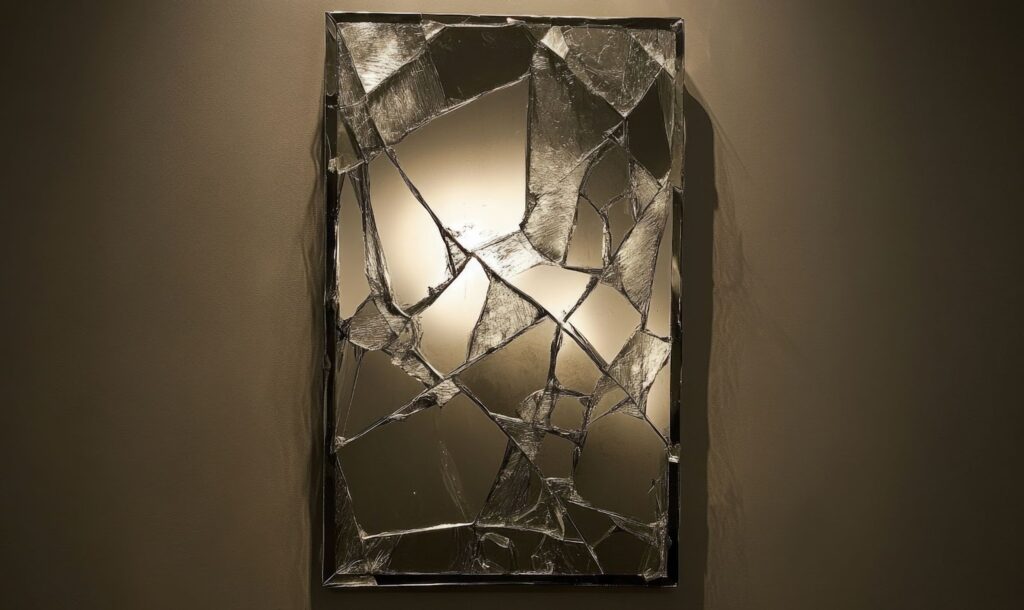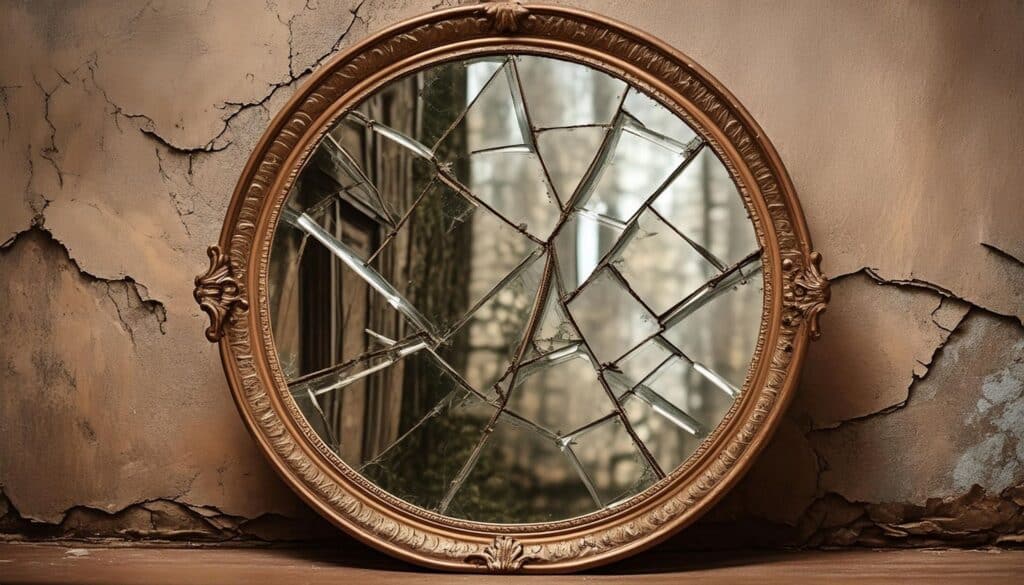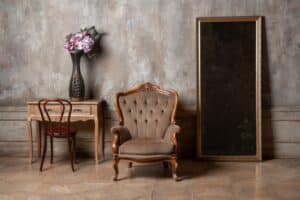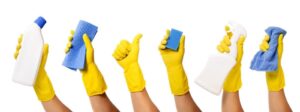When a mirror cracks or a window chips, it’s easy to feel overwhelmed at the need for glass repair. Many homeowners assume full replacement is the only option, while others turn to DIY tricks that may do more harm than good. Unfortunately, misinformation about glass repair is everywhere, leading to costly mistakes or unsafe fixes.
In this blog, we’re clearing up the most common myths surrounding mirror and glass damage, enabling you to confidently choose the right path — whether that’s repair or replacement.
Let’s set the record straight on glass repair services.
Myth #1: “All broken glass needs replacement.”
One of the most common misconceptions is that any damaged glass automatically needs full replacement. While that’s sometimes true — especially for severely shattered pieces or structurally compromised installations — many types of damage can actually be repaired, saving time and money.
Filling tabletops, mirrors, and some windows with specialized resins will often stabilize minor chips, hairline cracks, or edge damage. This is especially true when the damage hasn’t spread and the surrounding area remains intact.
However, knowing when repair is appropriate requires a professional assessment, which is why calling an expert is always your best first step.

Myth #2: “DIY glass repair kits are as good as professional repairs.”
Walk through a home improvement store and you’ll find dozens of DIY glass and mirror repair kits that promise flawless fixes for chips and cracks.
While these might work in a pinch for very superficial damage (like a minor chip on a car windshield), they don’t compare to the quality, durability, or clarity of a professional repair.
Professionals have access to industrial-grade materials and tools, such as UV-curing resins and precision polishers, that ensure a nearly invisible repair and long-lasting results. DIY kits often leave cloudy marks or don’t cure properly, weakening the glass further or affecting the mirror’s appearance.
Myth #3: “You can melt glass back together.”
A surprisingly persistent myth is the idea that it’s possible to reheat broken glass and fuse it back together. While, technically, it is possible to melt and reform glass, it’s not something you do in your garage — or even something most professional repair services offer.
Glass requires furnace temperatures of 1400°C (2552°F) and a controlled environment to melt and reform properly. Additionally, once tempered or coated glass gets damaged, its structural integrity and treatment can’t be restored simply by reheating.
So, no, you can’t “glue” a shattered mirror back together with heat.
Myth #4: “All glass is the same.”
People often assume that glass is glass, but that’s far from the truth. The type of glass you’re working with plays a big role in how (or whether) you can repair it.
For example:
- Annealed glass can often be repaired when it suffers minor damage. We use it in picture frames and interior doors.
- When broken, tempered glass in shower doors, car windows, and modern tabletops shatters into small pebbles, making it impossible to repair.
- Depending on the extent of the damage, you may be able to repair laminated glass, which includes a protective interlayer; we often use it in safety windows.
- Mirror glass includes a delicate reflective backing, which makes it difficult to replace or restore once damaged.
As you can see, knowing what type of glass you’re working with is imperative to knowing whether it’s repairable. This is another reason why you need a professional glass repair company to determine whether repairs are possible.
Myth #5: “It’s not worth fixing small cracks or chips.”
It’s easy to ignore small blemishes, especially when they don’t seem to affect performance. But small cracks or chips in glass will quickly spread if you don’t fix them. Changes in temperature, pressure, or even regular cleaning may cause these tiny imperfections to grow into major problems.
A minor blemish might seem harmless in mirrors, but if it affects the reflective backing or invites moisture, you might face delamination or black spots in the future.
Early intervention is almost always cheaper and easier than waiting.
Myth #6: “Broken mirrors are bad luck — throw them away.”
We’ve all heard the superstition that if you break a mirror, you’ll face seven years of bad luck. Some people take this as a sign to toss the mirror altogether, but mirror repair is more accessible than ever.
Whether your mirror is a family heirloom or a decorative centerpiece, a glass repair company can often salvage the frame, replace the damaged mirror panel, or even polish out minor flaws. Don’t toss a valuable or sentimental piece based on myth or fear.

Myth #7: “Glass repairs are always expensive.”
Many homeowners and business owners delay repairs under the assumption that it will cost too much. In truth, repair is often far more affordable than replacement, especially when damage is localized and hasn’t compromised the entire piece.
Plus, leaving damage unaddressed might cost you more in the long run. Drafty windows, compromised security, or water damage caused by a broken pane will lead to even greater expenses down the road.
Myth #8: “It’s only possible to repair windows and mirrors.”
Glass repairs go far beyond windows and mirrors. Skilled technicians are able to repair or replace glass for:
- Shower doors
- Glass table tops
- Cabinet doors
- Retail displays
- Shelving units
- Glass partitions or office walls
If it’s made of glass, you can likely have it repaired.
Myth #9: “Replacing glass is always the best choice.”
Another misconception is that replacing damaged glass is always better than repairing it. While replacement is sometimes necessary, repair is often the more sustainable choice. Replacing a pane of glass creates more waste and uses additional resources in manufacturing and shipping.
When possible, repairing a mirror or piece of glass extends its lifespan, reduces waste, and makes a greener environmental choice. Professional glass repair services will save you money and help lower your environmental footprint.
When to call a glass repair company
If you’re ever in doubt about whether a piece of glass or a mirror is repairable, the best course of action is to consult a professional. A glass repair services specialist will identify the type of glass, assess the extent of the damage, recommend the most cost-effective and safe solution, and offer repair or custom replacement options.
Mirror repair with Murray Glass
Don’t let common mirror and glass repair myths prevent you from making smart decisions about your space. Understanding what’s possible — and what’s best left to professionals — will save you time, money, and frustration.
If you’ve been putting off a repair, now is the time to act.
At Murray Glass, we understand the value of glass for the beauty, safety, energy efficiency, and functionality it brings to your home or business. Our expert technicians will assess the damage, offer trustworthy advice, and provide long-lasting solutions for mirrors, windows, tabletops, and more.
Let us help you cut through the myths and get your glass or mirror back in top condition. Contact Murray Glass for a free consultation today and see why we’re Utah’s go-to glass experts.




